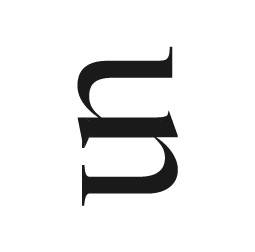Dual-Threaded Bolt
A precision-engineered bolt featuring two interwoven thread patterns — a complex multi-axis geometry designed to push the limits of parametric CAD modeling and additive manufacturing.
Problem
Traditional bolts rely on a single helical thread pattern.
Introducing two interlocking thread systems into the same bolt creates major engineering challenges:
- Thread interference
- Conflicting pitch and lead angles
- Tolerance stacking
- Manufacturing limitations
- Non-standard load paths
Conventional subtractive machining cannot produce two blended thread profiles in a single body.
The challenge:
Can you engineer a functional bolt with dual interwoven threads?
Solution
The Dual-Threaded Bolt is a demonstration of advanced geometric engineering:
- Two simultaneous helical thread paths
- Interwoven geometry using multi-start thread theory
- Parametric CAD to blend thread boundaries
- Designed specifically for additive manufacturing where geometry freedom is highest
The bolt and nut pair engage using a blended-thread mechanism, showcasing complex mechanical behavior not possible with traditional tooling.
The solution proves that additive manufacturing unlocks mechanical designs previously considered impossible.
Design
Key design characteristics
Dual Helical Paths
Two thread profiles cut through one another, sharing volume while maintaining function.
Parametric Threading
Pitch, lead, and thread height are controlled mathematically.
Multi-Axis Geometry
Each profile spirals with different characteristics, requiring carefully blended surfaces.
Tolerance Engineering
Clearances must be tuned precisely for additive manufacturing.
Nut Interface
Internal nut threads match the blended profile and must rotate smoothly.
Design Goals
- Explore the limits of CAD surfacing
- Demonstrate multi-start thread engineering
- Create a functional prototype using additive techniques
- Study thread interference and load paths
The design reveals new possibilities for mechanical fasteners when freed from traditional machining constraints.
Fabrication
Intended Manufacturing Method
Additive manufacturing (3D printing) — because subtractive methods cannot cut interwoven thread forms.
Print Considerations
- Material: PLA, ABS, or resin
- Resolution: High (0.1–0.15 mm layer height)
- Orientation: Threads should be printed horizontally for maximum edge crispness
- Support: Minimal internal support
- Calibration: Critical for thread engagement
Fabrication Challenges
- Achieving clean, sharp threads
- Preventing fused surfaces in interwoven regions
- Ensuring smooth engagement between bolt and nut
- Maintaining structural integrity despite complex geometry
The printed prototype demonstrates the feasibility of dual-threaded fasteners using modern manufacturing.
Iterations
Although fewer iterations were documented compared to the Bottle Insert, the bolt concept required refinement in several areas:
- Adjusting thread pitch for smoother rotation
- Calibrating clearance to prevent binding
- Redesigning transitions between thread forms
- Improving overhang performance during printing
- Enhancing nut engagement tolerances
Each iteration improved function, print quality, and the final mechanical behavior of the bolt.
Lessons
Key insights from this project:
- Multi-threaded systems require advanced parametric modeling
- Small changes to pitch, lead angle, or thread height have major mechanical effects
- Additive manufacturing enables geometric exploration impossible with machining
- Interwoven threads introduce unique load and wear characteristics
- Tight tolerances are required for smooth function
This project reinforced the idea that additive manufacturing is not just a prototyping tool — it's a pathway to entirely new mechanical ideas.
